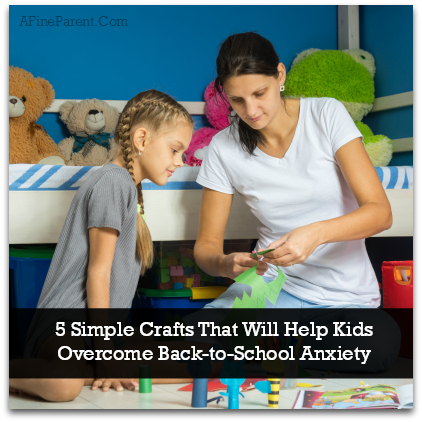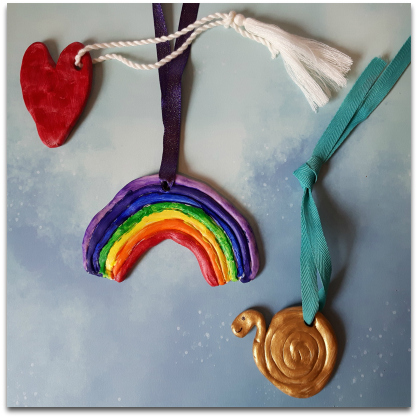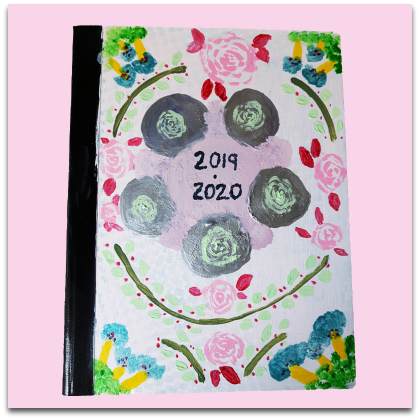 For some kids, heading back to school is something to look forward to – the excitement of seeing their friends again, the anticipation of playing on sports teams, and the intrigue of meeting the new teacher. These kids are planning their first-day-of-school outfits and chattering about resuming favorite recess activities.
For some kids, heading back to school is something to look forward to – the excitement of seeing their friends again, the anticipation of playing on sports teams, and the intrigue of meeting the new teacher. These kids are planning their first-day-of-school outfits and chattering about resuming favorite recess activities.
For some of the other children, the thought of the new school year on the horizon brings not eager enthusiasm but anxiety. And for anxious little ones who are just starting school, the anxiety is even worse: what to expect?
Most kids though will likely feel a little bit of both – excitement on one day, anxiety the next.
How do we help our kids in that second and third category get over the dread of heading back to school?
Creative activities are a great way to help relieve feelings of stress. Below you will find arts and crafts that are specifically geared towards helping kids get over their back-to-school anxiety. Whether you have a little one just starting school or an older kid returning to school, we’ve got you covered.
Here take a look –
Craft #1: Create puppets and put on a puppet show
 For some kids, it’s the fear of the unknown, whether that means the prospect of a new school, or having to take the school bus for the first time, or a jump from elementary school to middle school. While talking through this fear can help calm kids, acting out scenarios can better help your children to visualize situations and approach the unknown with a greater degree of confidence.
For some kids, it’s the fear of the unknown, whether that means the prospect of a new school, or having to take the school bus for the first time, or a jump from elementary school to middle school. While talking through this fear can help calm kids, acting out scenarios can better help your children to visualize situations and approach the unknown with a greater degree of confidence.
Making puppets allows kids to act out various back-to-school scenarios and talk about what might be bothering them and resulting in the back-to-school anxiety.
You and the kids can draw people representing students and teachers, glue the cut-out characters onto popsicle sticks, and make a show: “Hi kids! We’re going to learn lots of fun things this year!”
Additionally, you can make paper houses, a school, a school bus, and playground structures. Your kids can “play” school before they get there.
What you need: paper; scissors; pencils, crayons or markers; glue; popsicle or other wooden sticks
What to do:
- Draw the outlines of people, buildings, a school bus etc.
- If you make paper houses and a school, be sure to add tabs to the pictures before you cut them out so they can stand up.
- Color the outlines. Add fancy clothes, and if you want, a backpack, a lunchbox and more.
- Cut them out.
- For the puppets, attach popsicle sticks or wooden dowels to the back.
- Put on a show, or play with the cut-outs.
Craft #2: Make a key ring to remind your kids of home
 For other kids, back-to-school fear might be more rooted in separation anxiety. It’s not that your child is anxious about what’s to come, but rather he doesn’t want to leave you and the comfort and security of home. In this case, making something that your child can take with him to school will help him to deal with this fear.
For other kids, back-to-school fear might be more rooted in separation anxiety. It’s not that your child is anxious about what’s to come, but rather he doesn’t want to leave you and the comfort and security of home. In this case, making something that your child can take with him to school will help him to deal with this fear.
Using Fimo or a similar air drying clay, your child can make a key ring or talisman that reminds them of home and that they can keep in their backpack as a concrete connection to the familiar.
What you need: Fimo or other air dry clay; key chain ring
What to do:
- Fashion little clay objects: a house, a dog or cat, a favorite character (Peppa Pig, for example).
- If making a key ring, be sure to make a hole in the object to attach the key ring.
- Dry the objects according to clay instructions.
- Attach a key ring and fasten to your child’s school backpack or keep the talisman in a backpack pocket.
Craft #3: Decorate a lunch box or bag
 For some kids it may be social anxiety that makes school a scary place.
For some kids it may be social anxiety that makes school a scary place.
If your child will be eating lunch at school for first time, or if she’s anxious about lunchtime at school, help her to decorate her lunch box so that it can be a daily reminder of home in what is a potentially stressful situation.
What you need: lunch bag or box; paper; scissors; glue; crayons or markers
What to do:
- Decorate the bag or box with pictures of family, or flowers, or pictures of pets, etc.
If your child is anxious about eating a packed lunch, you could also brainstorm together about the types of food to pack in the lunch, and decorate a menu plan together so your child can anticipate what’s for lunch in the coming weeks.
Other great ideas for back-to-school crafts include making bookmarks and pencil toppers, or decorating a binder. Using these items at school brings a sense of familiarity to your child’s environment when she isn’t at home.
Craft #4: Make a heart map of all the things your child likes about school
 For kids suffering from general anxiety, their reluctance to go back to school may not stem from anything they can easily articulate, but rather from a pit-of-the-stomach feeling of dread.
For kids suffering from general anxiety, their reluctance to go back to school may not stem from anything they can easily articulate, but rather from a pit-of-the-stomach feeling of dread.
There are several ways we as parents can help our kids to manage their anxiety, from talking through anxious episodes to remaining calm ourselves when faced with stressful situations.
When an overall feeling of dread hits, focussing on the positive aspects of the situation can help relieve the situation. A heart map is a great activity for this situation.
What you need: construction paper; crayons, pencils or markers; scissors.
What to do:
- Draw a large heart on the paper.
- Divide the heart into sections.
- In each section, draw pictures and write words of all the things that are great about school, focusing on the positive things that kids like: friends, recess, Halloween parade, story time.
- While you are working on this craft, encourage your child to talk about what they enjoy. Focus on the positive!
Craft #5: Create a daily or weekly planner or agenda
 For older children, back-to-school anxiety may not necessarily be related to homesickness or dread. These kids are looking forward to seeing their friends and resuming their activities, but rather they are feeling anxious about the workload to come. The thought of homework and assignments and juggling extra-curriculars can become overwhelming and anxiety-inducing long before the school year even starts.
For older children, back-to-school anxiety may not necessarily be related to homesickness or dread. These kids are looking forward to seeing their friends and resuming their activities, but rather they are feeling anxious about the workload to come. The thought of homework and assignments and juggling extra-curriculars can become overwhelming and anxiety-inducing long before the school year even starts.
In this case, creating a beautiful daily or weekly planner or agenda is a great way to help manage those anxieties.
What you need: blank notebook, agenda, or journal, or even loose paper stapled together or compiled in a binder; Pencils or markers and highlighters. Bullet journals are all the craze, and can be found in many art and stationery stores.
What to do:
- Decorate pages for each week or month of the school year. Draw pictures related to Halloween or Thanksgiving or Christmas to highlight things to look forward to.
- As tests and assignments are announced in school, have your child note these in her journal or agenda, and highlight them and draw pictures related to them.
- Plan out blocks of time for studying, research, assignment work and, just as importantly, fun time. Plotting out small chunks of time to work on projects is less stressful than contemplating the enormity of an entire assignment.
- Remember to schedule in time for a nature walk, or highlight a Friday night to go out for ice cream. This takes the pressure off and makes the planning more fun.
Back-to-school anxiety is hard on both kids and parents, but sitting down and calmly working through our children’s anxieties can help relieve the more crippling effects and lets them work through anxiety to face the prospect of school more calmly and happily.
2-Minute Action Plan for Fine Parents
For our quick contemplation questions today consider these:
- How do your kids feel about starting/returning to school? Are they feeling excitement, anxiety or a mix of the two?
- If your child has some anxiety, would doing a craft project help?
- What anxiety and stress relief practices do you have at home in general?
Ongoing Action Plan for Fine Parents
- Take a look at your calendar and schedule in some arts and crafts time. The dog days of August is a natural time to start preparing kids for school.
- Pick one of the crafts described above, or choose your own.
- Talk about the crafts you will make together and include the kids in the trip to the Dollar Store or arts store to shop for supplies.
- Here are a few things to remember as you craft together –
- Make sure that craft time is focused on making fun crafts rather than the life lessons behind it.
- Encourage your kids to chat as you make the crafts, but remember that the conversation doesn’t have to focus on back to school anxiety.
- Find an area of the house (the fridge, or hang a bulletin board in the hall) to display your heart map, or to keep your puppets, as a visual reminder of the fun and positive aspects of school.
- Take it one day at a time! Dealing with anxiety in a child is hard for any parent. Focus on the positive and celebrate small victories.
Excellent suggestions. It doesn’t matter much what the kids create but spending the time productively is the key. Along with an emphasis for “shipping” work – it doesn’t matter if they get it perfect but they must complete them and move on to the next.
I’ve never heard this term ‘shipping work’ – can you break that down more?
For me, who is a definite ‘product knitter’ who wants the *thing* at the end and will assess what mistakes I’ll allow or fix before finishing, releasing my daughter from any end point goal/aim to produce is very important. She can, and will, pick that up easily enough in our society. I believe the engagement and interaction with the process is productive in and of itself.
We did an 8 step cooperative family canvas last December, in a group with friends, which was enormously empowering for all of us, but mostly the adults because it kept changing, and sometimes we loved a step, other times not, but we committed to holding space to play, step back, reassess, and carry on to everyone’s content and be with whatever materials and techniques were in front of us. Now I almost always have a canvas or two on hand for this reason, and I’m constantly amazed when my 4yr old calls her work done, it’s always surprising and interesting and definitely uniquely individual.
Currently we’re trialling ‘batching’ our art so that we have similar start points for various material and application explorations. We’re well into month 2 of almost exclusive liquid watercolors – child led is often slow, drawn out, and thorough.
Jessica – I love that you did a cooperative family canvas – what a fantastic idea! And having a canvas on hand to add to at will is brilliant.
I agree Deb – the time spent creating together is the most important end goal!
I was really excited by this title, but I feel a little disappointed at seeing the emphasis on end product, ‘make this’ mindset, that all the suggestions promote. Having something you made, from home to take with you is a brilliant idea, no denying. Yet anxiety is not time bound and having a regular frame work within which to self express after a long long day in public, in social interaction, with lists, tests, scores, reviews, and so many expectations, is important for both our children and us.
There is a lot of difference between process art and crafting. Maybe the process art turns into something down the track, maybe it was just half an hour of decompressing after the scheduled stress of a school or work day. Perhaps the time after school morphs into a visual diary to help with interior processing for the person in the process of making, and gentle, full attention exterior support giving for the playing with the supplies next to them. (Notice that the child and adult are not set in stone positions here.)
Make that time to create together, definitely, but experiment with what happens when you move towards an open ended exploration of materials and possibilities. What if we use watercolors OVER this pencil, pen, crayon, oil pastel, soft pastel, water soluble pastel? What drawing items give what effect ON TOP of the dry painting? How do the colors mix when the paper is dry, wet, partly wet, we drop oil in, we paint on top of a painting from last week? What can the Sharpie draw on? How long will that stay without fading? How many colors and materials of red can contribute to an ongoing collage?
Hi! Thanks for the comments – great suggestions! I absolutely agree that the time spent making something together is the most important outcome; the end product is often an added bonus. In a previous article I wrote about how the time spent simply doing art together provides that decompression time you mention. You can find the article here, if you’re interested: https://afineparent.com/positive-parenting-faq/creative-activities-for-children.html
I love your suggestions for exploration of materials – excellent ideas.